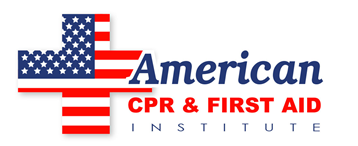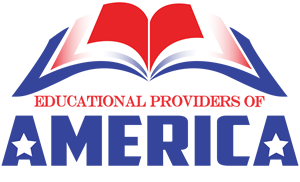- +1 (313) 355-9132
- info@hhacnaceus.com
- HOURS: 10:30 am - 4:30 pm EST, Monday-Friday

Become Certified as an Instructor Without Attending a Class.
Certify Each Person in Each Class for Just $5.99!
The American CPR and First Aid Institute has been providing blended-learning (combination of psychomotor and cognitive programs) nationally accredited and accepted curricula that is based upon the most current, evidence-based standards and guidelines for nearly 12 years. The design allows you to provide the high-quality program(s) in an inexpensive, time-efficient, and flexible manner.
Receive your 2-year instructor certificate (either by grandfathering in [no course attendance necessary]) or by attending The CPR/BLS Instructor Certification Course (an instructor class that includes both CPR/BLS and FA instructor certification is also available). Determine which method of instructor certification is right for you.
Each program includes the Instructor Guide, complete with handouts and all cognitive testing and recordkeeping materials (roster form, skill check-off lists, tests, answer keys, evaluation forms, etc. all on CD/flash drive), instructional video(s) (available on DVD or flash drive – the choice is yours), and Guidelines Update: An Overview of Basic Life Support and First Aid. Plus, you will receive timely and interesting news about BLS/CPR and FA, as well as customer service assistance for all your instructor-related questions.
Class Topics Covered in (Syllabus of) the BLS/CPR and FA Programs
Introduction
A Word About the Approval Process
Copyright and Authorization of Use Notice
Mission Statement
Course Objectives
Adult Teaching and Learning Principles
Lifelong Learning
Three Domains of Learning
Concepts of Learning
Guidelines for Giving Feedback
Verbal and Nonverbal Communication
Attributes of the Effective Instructor
Functions of the Instructor
Challenging Students
Learning Styles
Teaching Methods
Commonly Asked Questions About Basic Life Support and First Aid
Common Errors in Basic Life Support and First Aid
Basic Life Support
Basic Life Support Definition
Legal Aspects of Applying Basic Life Support
Universal Precautions
Correct Technique for Removing Contaminated Gloves
Heart Disease
Definitions
Pathology and Natural History
Risk Factors
Clinical Syndromes of Heart Disease
Angina Pectoris
Characteristics
Myocardial Infarction
Acute Coronary Syndrome Signs and Symptoms
First Aid for ACS
Sudden Cardiac Arrest
Stroke
Risk Factors for Stroke
Clinical Presentation of Acute Stroke
First Aid for Stroke
Chain of Survival
In-Hospital
Out-Hospital
Adult
Child
Adult CPR
Shock First Vs. Care First
Child CPR
Adult/Child Foreign Body Airway Obstruction Management
Infant CPR
Infant Foreign Body Airway Obstruction Management
Neonatal CPR
The Golden Minute
Summary of Variations in CPR Technique
Highlights of the Changes in Professional BLS Guidelines
Special Techniques and Adjunct Therapies
Jaw-thrust Maneuver without Head-tilt
Mouth-to-Mask Rescue Breathing
Mouth-to-Bag-Valve-Mask Rescue Breathing
Mouth-to-Shield Rescue Breathing
Mask-to-Tracheostomy Rescue Breathing
Mouth-to-Mouth Rescue Breathing
Mouth-to-Nose Rescue Breathing
Oxygen and Oxygen Intended for Emergency Use
Emergency Oxygen Delivery Devices
Oxygen Safety Tips
Recovery Position
Automated External Defibrillation
Using an Automated External Defibrillator (AED)
Special Considerations Before, During and After Defibrillation
Complications
Opioid Overdose
Opioid-Associated Life-Threatening Emergency Algorithm
Basic First Aid
First Aid Definition
Unintentional Injuries
Recommended Supplies for the Basic First Aid Kit
Legal Aspects of Applying Basic First Aid
Good Samaritan Statute
Universal Precautions
Correct Technique for Removing Contaminated Gloves
Hand Hygiene Guidelines
WHO Six-Step Technique for Handwashing and Applying Hand Sanitizer
First Aid Assessment
Primary Survey
Secondary Survey
SAMPLE History
DOTS
Head-to-Toe Examination
Triage
Blood Loss and Shock
Mechanism of Injury
Wound Types
Abrasion, Laceration, Puncture, and Avulsion
Signs and Symptoms of an Infected Wound
Some Words About Hemostatic Dressings and Tourniquets To Control External Bleeding
Open Chest Wounds
Open Abdominal Wounds with Evisceration
Open Pelvic Wounds
Animal Bite Wounds
Wounds That Require Medical Intervention
Internal Bleeding
Types of Closed Wounds
Minor Internal Hemorrhaging
Severe Internal Hemorrhaging
Common Signs and Symptoms of Internal Hemorrhaging
Causes of Internal Bleeding
Shock
Definition of Shock
Categories of Shock
Signs and Symptoms of Shock
Blood Volumes
First Aid for Shock
First Aid for External Bleeding
Burns
Layers of the Skin
Functions of the Skin
Mechanism of Injury
Thermal Burns
Degrees of Thermal Burns
Care for Thermal Burns
Electrical Burns
Care for Electrical Burns
Chemical
Care for Chemical Burns
Caustic Chemicals Resulting in Injury to the Skin
Do’s and Don’ts of Burn Care
Head, Neck and Spinal Cord Injuries
Anatomy
Eye Injuries
Head Injuries
Scalp and skull Injuries; Concussions
Nosebleeds
Fractured Nose
Avulsed Tooth
Spinal Cord Injuries
Some Words About Cervical Collars
Musculoskeletal Injuries
Anatomy
Types of Musculoskeletal Injuries
Signs and Symptoms of Fractures, Dislocations, Sprains and Strains
First Aid Care for Bone, Joint and Muscle Injuries
RICE
Soft Splint
Rigid Splint
Sling
Anatomic Splint
Sudden Illness
Acute Coronary Syndrome
Stroke
Asthma
Anaphylactic Shock
How to Use an EpiPen® Epinephrine Auto-Injector
Fainting
Seizures
Diabetic Emergencies
Pregnancy Emergencies
Poisoning
Bites and Stings
Snakebites
Bees, Wasps and Hornets
Spider Bites
Other Types of Bites and Stings
Heat- and Cold-Related Emergencies
Rescuing and Moving Injured Victims
Confined Space
Moving Injured Victims
Highlights of the Changes in First Aid Guidelines
Class Materials and Equipment
Course Roster
Evaluation Forms
Skill Check-Off Forms
Tests
Answer Sheet (Master Copy for All Tests)
Answer Keys
Instructions for Completing Certificates of Completion
Record Maintenance
Checklist of Class Equipment and Materials
Decontamination of Mannequins/Equipment and Ensuring Student Safety
Decontamination of Mannequins and Equipment After Class
Reducing the Risk of Cross-Contamination and Student Injury
During Class
Course Standards and Outlines
Course Standards
Course Outlines
Instructor Responsibilities
References
Orders just for BLS instructor certification will not receive any of the FA materials.
The Professional Basic Life Support (BLS) Instructor Package costs $189.99 ($329.99 for the BLS and FA Instructor Combination Package). Again, each certification card costs just $5.99, a price well below the national average.
Please contact us if you need more information.
WHAT CUSTOMERS HAVE TO SAY
ABOUT THE INSTRUCTOR CERTIFICATION PROGRAMS, PACKAGES, AND CUSTOMER SERVICE
… I am also impressed with the basic life support instructor program– it’s so thorough! But just as much, I like its flexibility and economy.
Ileen Byers, Home Care Owner and BLS Instructor
Country Lane Home Care
Michigan
The content is so detailed and well-organized. We’re all happy with the materials, especially since they cost us a fraction of what we were paying with another training company.
Katie Johnson, RN and CNA Trainer
Career in Caregiving LLC
Washington
I feel so blessed to have you look out for me and everyone!!! I’m glad to be a part of your organization. Thank you for sending materials to share with my students.
Denise Mecartea, Home Administrator
Washington
I have enjoyed working with you and you are always so helpful to me when I have questions or concerns. I look forward to continuing our working relationship.
Janis N., RN
Michigan
The material helped me better understand how to teach basic life support and first aid and keep students on task.
Kelly M., Home Health Care Manager
Indiana
The instructor was very friendly and knowledgeable and put us at ease. She kept the class moving without rushing through the material.
Denise T., Human Resources Manager
Ohio
The instructor-trainer is well versed in the subject and knowledgeable of the procedures. She is excellent at her job and brings a lot of enthusiasm and energy to it.
Vernola S., RN
Michigan
The instructor created an atmosphere conducive to learning.
Kathi P., RN, Assistant Director of Nursing
Michigan
* Cost after purchase of instructor package; excluding applicable tax and S&H.
** You may choose the Adult-only with AED or Pediatric-only with AED curriculum; however, we recommend the Adult, Child, and Infant with AED option to ensure regulatory compliance.
*** The American Heart Association (AHA) is a registered trademark of American Heart Association, Inc.
